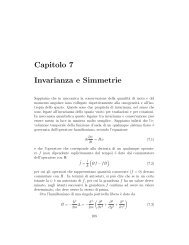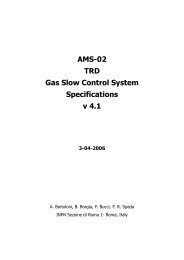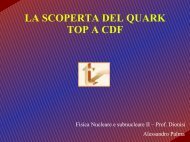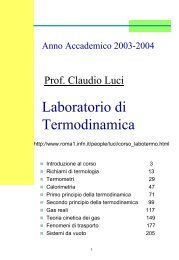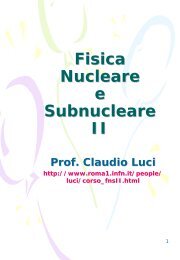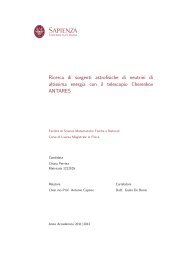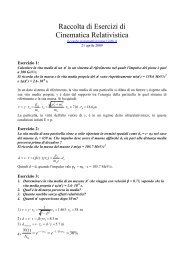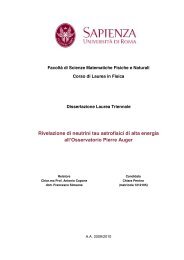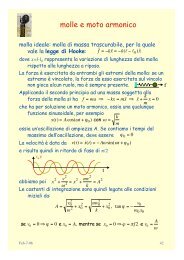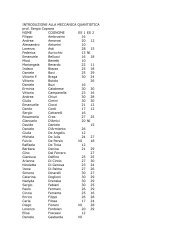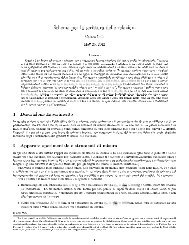You also want an ePaper? Increase the reach of your titles
YUMPU automatically turns print PDFs into web optimized ePapers that Google loves.
contracting with −k µ and with m µ we find<br />
E = E 1 + E 2<br />
L = L 1 + L 2 . (4.67)<br />
We also assume that <strong>the</strong> particle 1 is massless (i.e. a photon), and<br />
that ṙ 1 < 0andṙ 2 > 0: <strong>the</strong> particle 1 falls in <strong>the</strong> black hole, while<br />
<strong>the</strong> particle 2 comes back to infinity.<br />
The photon 1 never goes outside <strong>the</strong> ergosphere, thus we can<br />
require E 1 < 0, if L 1 < 0. Then, it must be<br />
and <strong>the</strong> particle 2 reaches infinity with<br />
V − (r + )(= V + (r + )) E<br />
L 2 = L − L 1 >L. (4.69)<br />
In this way, at <strong>the</strong> end we have at infinity a particle more energetic<br />
than <strong>the</strong> initial one. We say we have extracted rotational energy from<br />
<strong>the</strong> black hole because <strong>the</strong> photon 1, with E 1 < 0,L 1 < 0, reduces<br />
<strong>the</strong> mass-energy M <strong>of</strong> <strong>the</strong> black hole and its angular momentum<br />
J = Ma to <strong>the</strong> values M fin , J fin respectively:<br />
M fin = M + E 1



